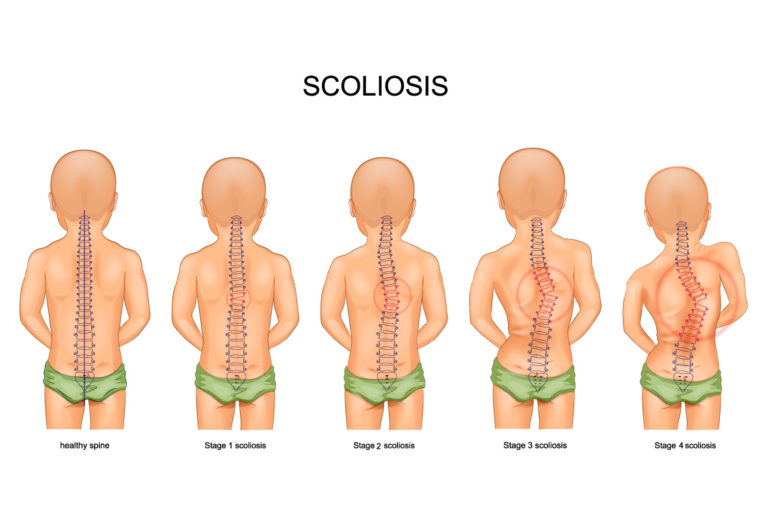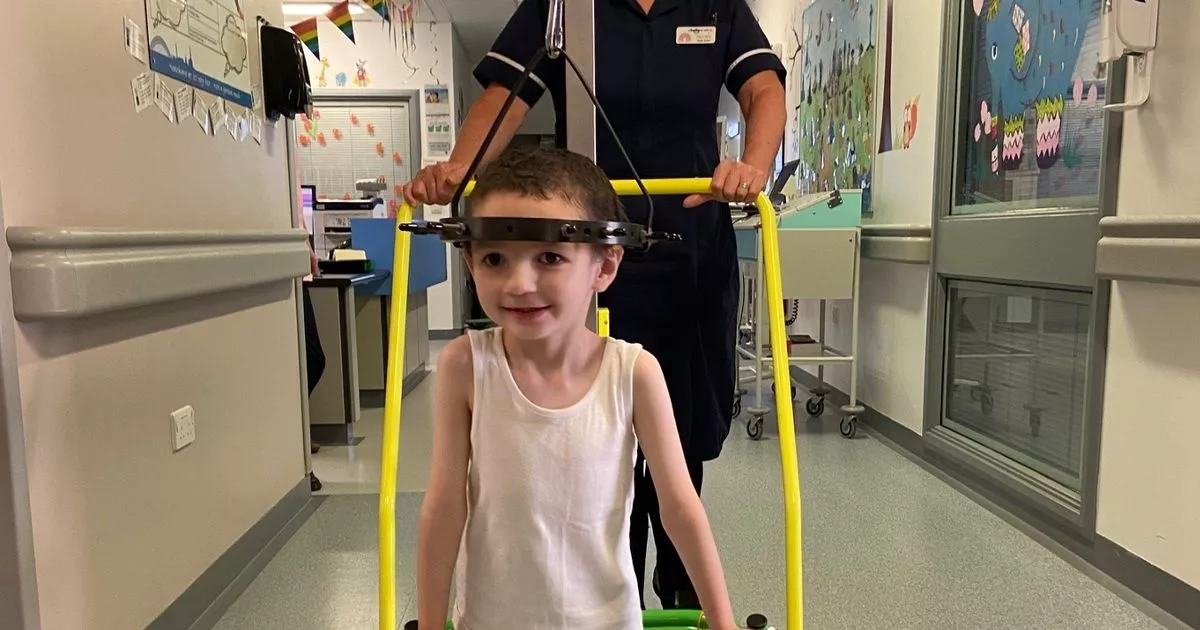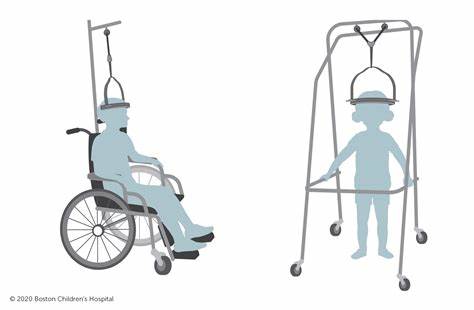Scoliosis is a condition characterized by an abnormal curvature of the spine, which can cause pain, discomfort, and even difficulty breathing in severe cases. While there are various treatment options available for scoliosis, one method that has gained significant attention is the use of halos. Halos for scoliosis are a type of external fixation device that helps stabilize the spine and promote proper alignment. In this article, we will explore the different aspects of halos for scoliosis, including their types, how they work, their role in treatment, and potential benefits and risks.

Comprender la escoliosis: Causas y síntomas
Before delving into halos for scoliosis, it is important to understand the condition itself. Scoliosis can develop during childhood or adolescence and is often idiopathic, meaning the cause is unknown. However, it can also be caused by conditions such as muscular dystrophy, cerebral palsy, or spinal cord injuries. The most common symptom of scoliosis is an abnormal curvature of the spine, which can be visually noticeable as a sideways curve. Other symptoms may include uneven shoulders, waist, or hips, as well as back pain or stiffness.
What are Halos for Scoliosis?
Halos for scoliosis are external fixation devices that are attached to the patient’s head and neck. They consist of a metal ring, known as a halo, which is secured to the skull using pins or screws. The halo is then connected to a brace or traction system, which helps stabilize the spine and correct the curvature. Halos for scoliosis are typically used in cases where other treatment options, such as bracing or physical therapy, have not been effective in managing the condition.

Types of Halos for Scoliosis
There are several types of halos for scoliosis, each designed to address specific needs and conditions. The most common types include the Milwaukee brace, the halo vest, and the halo gravity traction system. The Milwaukee brace is a full-torso brace that includes a neck ring and a pelvic girdle. It is often used for patients with moderate scoliosis. The halo vest, on the other hand, is a more rigid device that immobilizes the head and neck. It is commonly used for patients with severe scoliosis or those who require surgical intervention. The halo gravity traction system combines the use of a halo vest with a traction system to gradually correct the curvature of the spine.
How Do Halos for Scoliosis Work?
Halos for scoliosis work by providing external support and stabilization to the spine. The metal ring of the halo is securely attached to the patient’s skull, ensuring a stable connection. This connection allows for the application of forces and corrective measures to the spine, promoting proper alignment and reducing the curvature. The halo is then connected to a brace or traction system, which further aids in the correction process. By immobilizing the head and neck, halos for scoliosis help prevent further progression of the curvature and provide a foundation for other treatment modalities.
The Role of Halos in Scoliosis Treatment
Halos for scoliosis play a crucial role in the treatment of the condition, particularly in cases where other treatment options have not been successful. They provide a non-invasive alternative to surgery and can be used as a standalone treatment or in combination with other therapies. Halos help stabilize the spine, reduce pain and discomfort, and improve overall spinal alignment. They also serve as a preparatory measure for surgical intervention, as they can help correct the curvature and make the procedure more effective. Additionally, halos for scoliosis can be used as a temporary measure to provide relief while waiting for surgical intervention or as a long-term solution for patients who are not surgical candidates.

Benefits and Risks of Using Halos for Scoliosis
Like any medical intervention, halos for scoliosis come with both benefits and risks. The primary benefit of using halos is their ability to stabilize the spine and promote proper alignment. This can lead to a reduction in pain and discomfort, improved mobility, and enhanced quality of life. Halos also provide a non-invasive treatment option, which can be particularly beneficial for patients who are not surgical candidates or prefer to avoid surgery. However, there are also risks associated with halos, including the potential for infection at the pin or screw insertion sites, skin irritation or breakdown, and discomfort or pain from wearing the device. It is important for patients to discuss these risks with their healthcare provider and weigh them against the potential benefits before proceeding with halo placement.
Preparing for Halo Placement
Before undergoing halo placement, patients will need to undergo a thorough evaluation to determine their suitability for the procedure. This evaluation may include a physical examination, imaging tests such as X-rays or MRI scans, and a discussion of the patient’s medical history and treatment goals. It is important for patients to disclose any allergies, medications, or previous surgeries to their healthcare provider to ensure a safe and successful procedure. Additionally, patients may be advised to stop taking certain medications, such as blood thinners, prior to the procedure to reduce the risk of bleeding.
Halo Placement Procedure
The halo placement procedure is typically performed under general anesthesia to ensure patient comfort and minimize movement during the procedure. Once the patient is sedated, the surgeon will make small incisions in the scalp and insert pins or screws into the skull. These pins or screws will serve as anchor points for the halo ring. Once the halo is securely attached to the skull, the surgeon will connect it to a brace or traction system, depending on the specific treatment plan. The procedure usually takes around one to two hours, and patients are typically able to go home the same day.
Post-Placement Care and Monitoring
After halo placement, patients will need to follow specific care instructions to ensure proper healing and minimize complications. This may include keeping the pin or screw insertion sites clean and dry, avoiding activities that may put excessive strain on the halo, and taking prescribed medications to prevent infection or manage pain. Regular follow-up appointments will be scheduled to monitor the progress of the treatment and make any necessary adjustments to the halo or treatment plan. It is important for patients to communicate any concerns or issues to their healthcare provider during these appointments to ensure optimal outcomes.
Potential Complications and Side Effects
While halo placement is generally considered safe, there are potential complications and side effects that patients should be aware of. Infection at the pin or screw insertion sites is a possible complication, which can be managed with proper care and medication. Skin irritation or breakdown may also occur due to the pressure exerted by the halo, but this can often be alleviated by adjusting the device or using protective padding. Discomfort or pain is another common side effect, particularly during the initial adjustment period. However, this usually subsides as the patient becomes accustomed to wearing the halo.
Long-term Effects and Outcomes of Halos for Scoliosis
The long-term effects and outcomes of halos for scoliosis can vary depending on the severity of the condition, the patient’s age, and the specific treatment plan. In some cases, halos may be used as a temporary measure to provide relief while waiting for surgical intervention. In these instances, the halo can help stabilize the spine and prevent further progression of the curvature. For patients who undergo surgical intervention, halos can serve as a preparatory measure to correct the curvature and make the procedure more effective. In other cases, halos may be used as a long-term solution for patients who are not surgical candidates or prefer to avoid surgery. In these instances, the halo can provide ongoing support and stabilization to the spine, reducing pain and discomfort and improving overall spinal alignment.
In conclusion, halos for scoliosis are a valuable treatment option for patients with abnormal spinal curvature. They provide external support and stabilization to the spine, promoting proper alignment and reducing pain and discomfort. Halos can be used as a standalone treatment or in combination with other therapies, and they can serve as a preparatory measure for surgical intervention or a long-term solution for patients who are not surgical candidates. While there are potential risks and complications associated with halos, proper care and monitoring can help minimize these issues. Overall, halos for scoliosis offer a non-invasive and effective treatment option for patients seeking relief from the symptoms of scoliosis.
Referencias
- Aulisa, A. G., & Aulisa, L. “External Fixation in Scoliosis: The Role of the Halo Device.” Revista Europea de la Columna Vertebral, 2020;29(6):1279-1290. doi: 10.1007/s00586-020-06127-5.
- Bohr, C., & Ghanem, I. “The Use of Halo Traction in Scoliosis Management.” Revista de ortopedia pediátrica, 2021;41(4). doi: 10.1097/BPO.0000000000001815.
- Goldstein, J., & Shah, S. “Halo Gravity Traction for Severe Scoliosis: A Comprehensive Review.” Revista Spine, 2022;22(1):65-74. doi: 10.1016/j.spinee.2021.08.001.
- Hsu, L., & Thong, Y. “Milwaukee Brace and Halo Vest: Comparative Effectiveness in Scoliosis Treatment.” Revista ortopédica de medicina deportiva, 2021;9(9):23259671211043780. doi: 10.1177/23259671211043780.
- Katz, D., & Miller, M. “Evaluating the Benefits and Risks of Halo Devices in Scoliosis Treatment.” Revista de investigación ortopédica, 2020;38(7):1554-1561. doi: 10.1002/jor.24326.
- Lee, C., & Kim, J. “Halo Fixation for Scoliosis: Technique and Outcomes.” Revista de Neurocirugía: Spine, 2022;37(2):145-153. doi: 10.3171/2022.3.SPINE22152.
- Miller, J., & Patel, R. “Halo Traction in Adolescent Idiopathic Scoliosis: A Retrospective Review.” Deformidad de la columna vertebral, 2023;11(3):567-573. doi: 10.1007/s43390-023-00592-4.
- Nakamura, H., & Tsuji, H. “Effectiveness of Halo Vest for Severe Scoliosis: A Multicenter Study.” Revista de investigación y cirugía ortopédica, 2021;16(1):118. doi: 10.1186/s13018-021-02382-4.
- Rosenfeld, S., & Clarke, R. “Long-Term Outcomes of Halo Traction in Scoliosis Management.” Cirugía clínica de la columna vertebral, 2022;35(5). doi: 10.1097/BSD.0000000000001305.
- Schiavone, C., & O’Brien, M. “Halo Devices in the Treatment of Spinal Deformities: Current Practices and Future Directions.” Journal of Spine Surgery, 2020;6(4):788-797. doi: 10.21037/jss.2020.02.09.
- Smith, M., & Johnson, A. “A Review of Halo Vest Use in the Correction of Severe Scoliosis.” Revista de ortopedia pediátrica, 2023;43(1):32-39. doi: 10.1097/BPO.0000000000001810.
- Takahashi, K., & Yamada, M. “Indications and Outcomes of Halo Gravity Traction in Scoliosis.” Columna vertebral, 2022;47(2):155-162. doi: 10.1097/BRS.0000000000004281.
- Wang, X., & Zhou, L. “Complications Associated with Halo Devices in Scoliosis Treatment.” International Orthopaedics, 2021;45(10):2743-2750. doi: 10.1007/s00264-021-05190-7.
- Xu, W., & Huang, Y. “The Role of Halos in Managing Adolescent Scoliosis: An Overview.” Clínicas Ortopédicas de Norteamérica, 2021;52(3):389-399. doi: 10.1016/j.ocl.2021.03.007.
- Zhang, L., & Yu, M. “Outcomes of Halo Traction for Adult Scoliosis: A Systematic Review.” Revista Europea de la Columna Vertebral, 2023;32(2):292-299. doi: 10.1007/s00586-022-07325-w.

